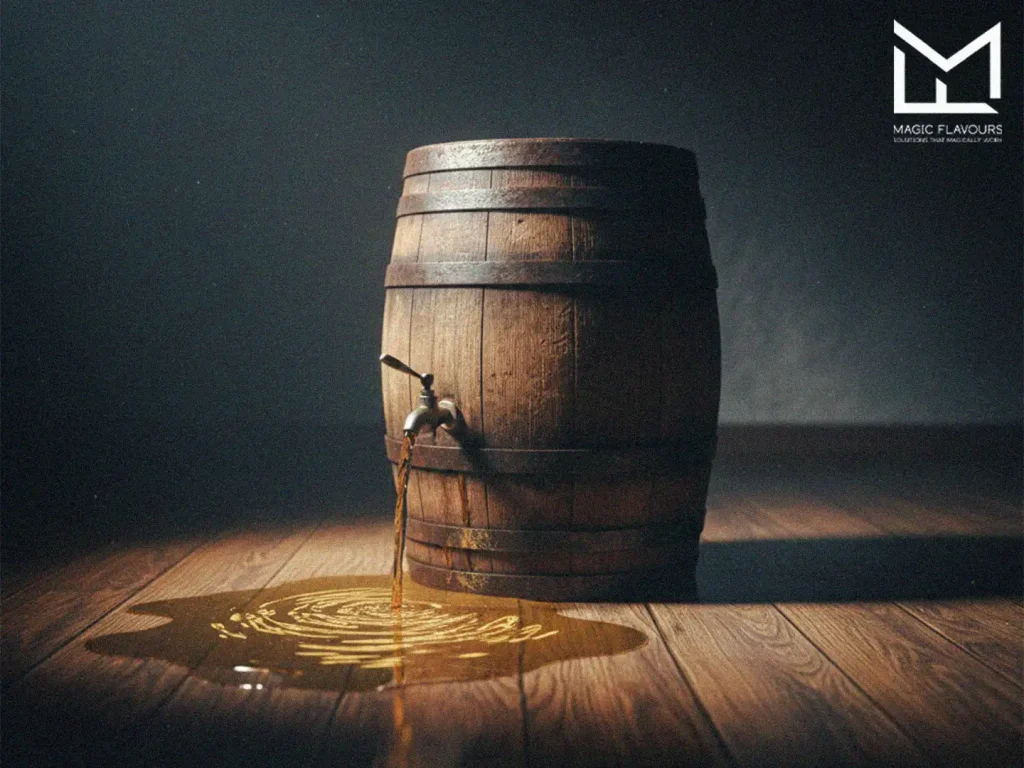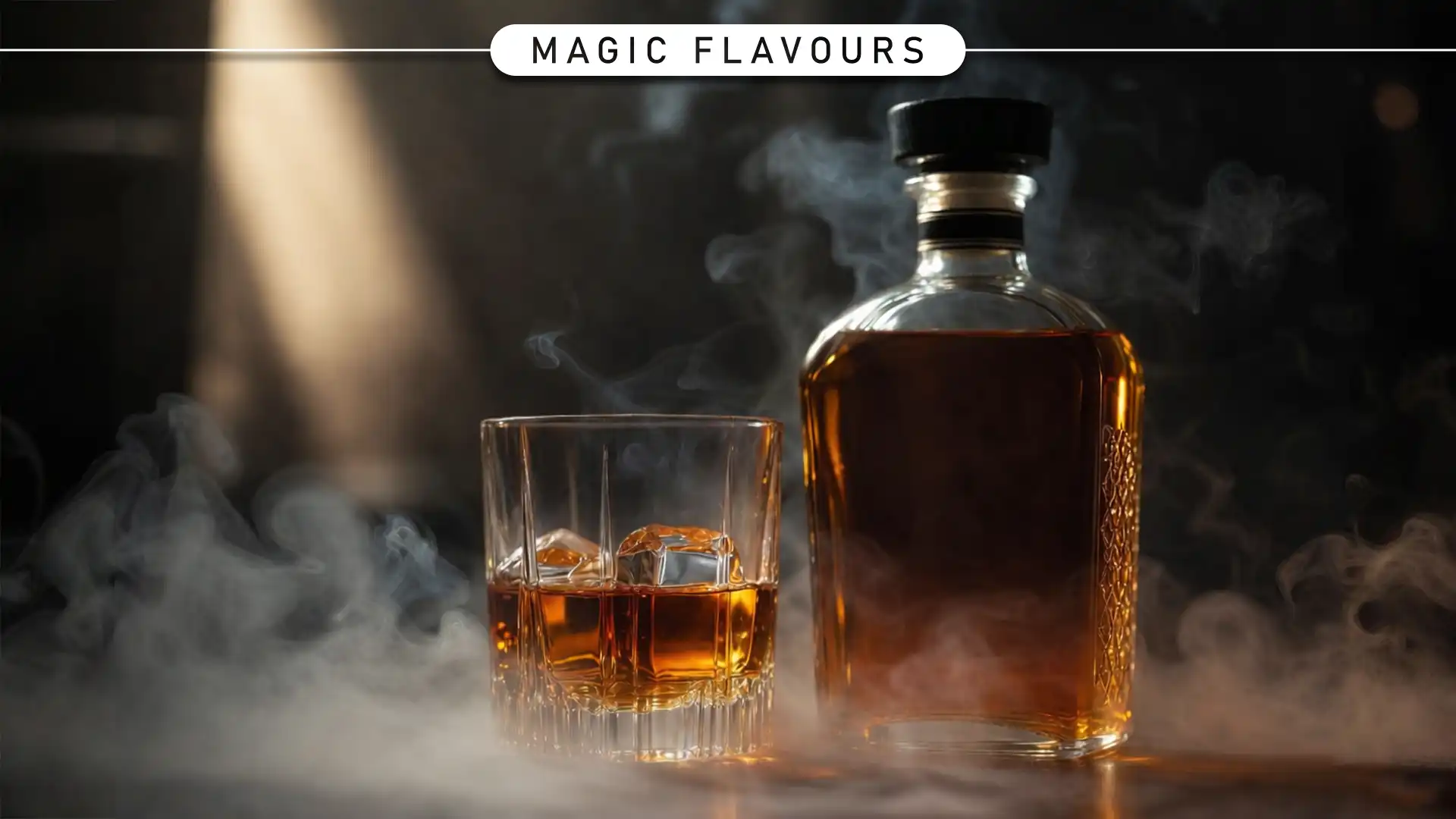1. Introduction to Whiskey Flavor
What makes whiskey flavors unique and complex
Whiskey flavor develop through intricate production processes. And each step adds distinct characteristics. Because of this, no two whiskeys taste exactly alike. So, factors like grain selection and aging create unique profiles. And regional traditions further diversify these flavors.
The complexity comes from hundreds of chemical compounds. And these compounds interact in fascinating ways. Because of this, whiskey offers layered tasting experiences. So, you might notice different notes with each sip. And this depth makes whiskey exploration endlessly rewarding.
Why understanding flavor profiles enhances appreciation
Knowing flavor profiles transforms casual drinking into mindful appreciation. And it helps you identify what you enjoy. Because of this, you can make informed choices. So, you’ll discover whiskeys that match your preferences. And this knowledge deepens your overall experience.
Understanding profiles also connects you to whiskey’s heritage. And you begin to recognize regional signatures. Because of this, you appreciate the craftsmanship behind each bottle. So, tasting becomes more than just consumption. And it becomes a journey through tradition and innovation.
The basic components of whiskey taste
Whiskey taste consists of five fundamental components. And these include sweetness, bitterness, and sourness. Because of this, they form the foundation of flavor perception. So, your palate detects these elements first. And they create the whiskey’s basic structure.
Aromatics and mouthfeel complete the tasting experience. And they add dimension beyond basic tastes. Because of this, nosing reveals hidden flavor notes. So, texture affects how flavors unfold on your tongue. And together, these components create whiskey’s signature.
2. The Science Behind Whiskey Flavors
Chemistry of Whiskey Flavor: Taste Compounds
Chemical compounds form whiskey’s distinct flavor profile. And esters contribute fruity notes like apple or pear. Because of this, they develop during fermentation. So, different yeast strains produce varying ester levels. And this creates unique fruit characteristics in each whiskey.
Phenols and aldehydes add other essential flavors. And phenols deliver smoky or medicinal notes. Because of this, they come from peat during malting. So, aldehydes provide nutty or grassy elements. And these compounds interact to form complex taste experiences.
The role of ethanol in flavor perception
Ethanol acts as a flavor carrier in whiskey. And it transports aromatic compounds to your senses. Because of this, alcohol content affects intensity. So, higher ABV whiskeys often present bolder flavors. And this makes cask strength expressions particularly vibrant.
Ethanol also influences your perception of sweetness. And it can suppress certain taste receptors. Because of this, it balances harsh elements. So, proper alcohol integration creates harmony. And this ensures no single flavor overpowers others.
How our senses interact to create the whiskey flavor experience

Smell and taste work together during whiskey tasting. And your nose detects volatile aromatic compounds first. Because of this, nosing reveals hidden flavor notes. So, your brain processes these aromas before tasting. And this creates a complete flavor picture.
Touch also plays a crucial role. And mouthfeel affects how flavors spread across your tongue. Because of this, texture influences taste perception. So, warming sensations enhance spicy notes. And these sensory inputs combine to create the full whiskey experience.
3. Production Secrets Behind Whiskey Flavor
Impact of different grains (barley, corn, rye, wheat)
Grains form the foundational flavor of whiskey. And each type contributes unique characteristics. Because of this, barley creates malty, nutty notes. So, it’s essential for Scotch and Irish whiskey. And corn delivers sweet, rich flavors.
Rye adds spicy, peppery elements to whiskey. And it creates a distinct dry finish. Because of this, rye whiskey feels bold and complex. So, wheat provides soft, smooth textures. And it balances sharper grain flavors beautifully.
How malting, fermentation, and distillation affect flavor
Malting unlocks sugars within barley grains. And this process develops biscuity, cereal notes. Because of this, controlled germination is crucial. So, kilning adds toast or smoke flavors. And these early steps shape the spirit’s core.
Fermentation produces alcohol and flavor compounds. And yeast strains create fruity esters. Because of this, fermentation time affects complexity. So, distillation concentrates these flavors. And copper pot stills remove harsh impurities gently.
The crucial role of barrel aging and wood interaction
Barrel aging transforms raw spirit into whiskey. And wood imparts vanilla, caramel, and spice. Because of this, new charred oak defines bourbon. So, used barrels add subtle wine or sherry notes. And time mellows harsh alcohol flavors.
Wood interaction extracts tannins and lignin. And these compounds create structure and depth. Because of this, climate affects aging speed. So, hotter warehouses accelerate flavor development. And this interaction makes whiskey truly complex.
4. Regional Flavor Profiles
Scotch (Highland, Islay, Speyside Differences)
Highland Scotch offers diverse and robust flavors. And it ranges from light and floral to rich and peaty. Because of this, it represents Scotland’s largest whisky region. So, you’ll find honeyed notes and gentle spices. And coastal expressions add maritime saltiness.
Islay Scotch is famous for intense peat smoke. And it delivers medicinal, briny characteristics. Because of this, it divides whisky enthusiasts strongly. So, expect iodine, seaweed, and campfire notes. And these flavors come from local peat and sea spray.
Speyside Scotch is known for elegance and fruitiness. And it features apple, pear, and floral aromas. Because of this, it’s Scotland’s most densely populated whisky region. So, distilleries here focus on refined complexity. And they often use sherry casks for richness.
Bourbon vs. Other American Whiskeys
Bourbon must contain at least 51% corn. And this creates sweet, full-bodied flavors. Because of this, vanilla and caramel notes dominate. So, new charred oak barrels are required by law. And they contribute coconut and toffee characteristics.
Rye whiskey offers spicier alternatives to bourbon. And it must contain at least 51% rye grain. Because of this, it delivers peppery, bold flavors. So, it excels in cocktails like Manhattans. And Tennessee whiskey undergoes charcoal filtering for smoothness.
Irish, Japanese, and Other International Styles

Irish whiskey is typically smooth and approachable. And it’s usually triple-distilled for purity. Because of this, it lacks the smokiness of Scotch. So, you’ll find light, honeyed flavors with subtle spice. And this makes it perfect for whiskey newcomers.
Japanese whiskey balances tradition with precision. And it often resembles elegant Scotch styles. Because of this, it emphasizes harmony and refinement. So, expect complex layers of fruit and oak. And distilleries perfect their blending techniques meticulously.
Other countries now produce distinctive whiskeys too. And India creates tropical fruit notes due to climate. Because of this, Taiwanese whiskey ages rapidly. So, Australian expressions feature unique local characters. And global innovation continues expanding whiskey diversity.
5. Whiskey Flavor Notes: Essential Categories
Sweet Notes (Vanilla, Caramel, Honey)

Sweet notes dominate many whiskey profiles. And they primarily come from oak barrels. Because of this, vanillin creates distinct vanilla flavors. So, caramel notes develop from toasted wood sugars. And honey-like sweetness emerges through slow aging.
These sweet elements provide approachable first impressions. And they balance stronger flavor components. Because of this, bourbon showcases them prominently. So, wheated whiskeys emphasize gentle honey tones. And these notes create smooth, welcoming sipping experiences.
Fruit Flavors (Citrus, Berries, Dried Fruits)
Fruit flavors add brightness to whiskey. And they range from fresh citrus to rich dried fruits. Because of this, esters during fermentation create these notes. So, Speyside malts often feature apple and pear. And sherry casks contribute raisin and fig characteristics.
These fruity elements enhance whiskey’s complexity. And they provide refreshing contrast to heavier flavors. Because of this, younger whiskeys show brighter fruit notes. So, aged expressions develop deeper dried fruit tones. And this evolution creates dynamic tasting journeys.
Spice and Pepper Elements
Spice and pepper add exciting kick to whiskey. And they often come from grain selection. Because of this, rye delivers bold black pepper notes. So, high-rye bourbons offer cinnamon and clove. And these spicy elements create memorable finishes.
These flavors stimulate the palate effectively. And they balance sweeter, richer components. Because of this, they define many American whiskeys. So, spice lovers often seek rye-forward expressions. And these notes create warming, complex sensations.
Smoke and Peat Characteristics
Smoke and peat create distinctive whiskey profiles. And they come from burning peat during malting. Because of this, Islay Scotch showcases intense smokiness. So, expect medicinal, maritime, and earthy notes. And these flavors divide whisky enthusiasts strongly.
Smoke levels vary dramatically across styles. And they range from subtle to overpowering. Because of this, peat measurement uses phenol parts per million. So, Highland Park offers balanced smoke. And these characteristics create bold, unforgettable experiences.
Nutty and Chocolate Notes
Nutty and chocolate notes add depth to whiskey. And they develop through Maillard reactions during aging. Because of this, toasted oak creates almond and walnut flavors. So, darker whiskeys feature rich chocolate tones. And these elements provide satisfying richness.
These flavors often appear in aged expressions. And they complement sweet and spicy notes beautifully. Because of this, sherry-casked whiskies showcase them prominently. So, expect marzipan and dark chocolate in mature malts. And these notes create luxurious, complex finishes.
6. Whiskey Flavor Tasting: Sensory Techniques
Proper Nosing Techniques
Proper nosing begins with glass selection. And tulip-shaped glasses concentrate aromas effectively. Because of this, they enhance your sensory experience. So, gently swirl the whiskey to release volatiles. And keep your mouth slightly open while sniffing.
Take short, gentle sniffs rather than deep inhalations. And this prevents alcohol fatigue in your nose. Because of this, you’ll detect more subtle notes. So, alternate between nostrils for different perceptions. And rest periodically to reset your senses.
Palate Training Methods
Start training with basic taste recognition. And identify sweet, sour, salty, bitter, and umami separately. Because of this, you’ll build a flavor foundation. So, practice with water solutions of each taste. And gradually progress to more complex combinations.
Compare whiskeys side-by-side regularly. And this develops your comparative tasting skills. Because of this, you’ll notice subtle differences faster. So, use neutral palate cleansers like water or bread. And take notes to track your progress over time.
Using Whiskey Flavor Wheels
Flavor wheels organize whiskey aromas systematically. And they start with broad categories in the center. Because of this, they branch into specific notes outward. So, begin with general impressions like “fruity.” And then narrow down to “apple” or “citrus.”
Consult flavor wheels during tastings as guides. And they help articulate what you’re experiencing. Because of this, they expand your tasting vocabulary. So, use them as training tools initially. And eventually, you’ll identify notes without assistance.
How to Describe What You’re Experiencing
Use specific, concrete terms when describing whiskey. And avoid vague words like “good” or “smooth.” Because of this, focus on identifiable characteristics. So, mention “vanilla” instead of just “sweet.” And connect flavors to familiar references.
Describe how flavors evolve across the palate. And note the arrival, development, and finish separately. Because of this, you capture the complete experience. So, mention texture and mouthfeel too. And share personal connections to certain aromas.
7. Mastering Whiskey Flavor Through Casks
Different Types of Oak (American vs. European)
American oak imparts distinct vanilla and coconut notes. And it comes from Quercus alba trees. Because of this, it’s commonly used for bourbon. So, its looser grain allows faster flavor extraction. And char levels create caramelized sugars.
European oak offers richer, spicier characteristics. And it comes from Quercus robur or petraea trees. Because of this, it’s prized for sherry casks. So, its tighter grain delivers slower, deeper integration. And it adds dried fruit and tannic structure.
Effects of Previous Cask Contents (Sherry, Wine, Rum)

Sherry casks contribute rich, dried fruit flavors. And they add raisin, fig, and Christmas cake notes. Because of this, they’re highly sought after. So, they create deep, complex profiles. And they often command premium prices.
Wine casks introduce vibrant fruit elements. And red wine adds berry and chocolate notes. Because of this, they create modern flavor twists. So, rum casks bring tropical sweetness. And these finishes expand whiskey’s versatility significantly.
Cask Strength vs. Diluted Expressions
Cask strength whiskeys offer undiluted intensity. And they present flavors at their most powerful. Because of this, they reveal hidden nuances. So, they appeal to experienced tasters. And adding water can unlock new aromas.
Diluted expressions provide approachable balance. And water softens alcohol’s harsh edges. Because of this, they highlight subtle flavors. So, they’re ideal for casual sipping. And they showcase the distiller’s intended profile.
8. Perfect Whiskey Flavor Food Pairings
Complementary Pairing Principles
Complementary pairings balance whiskey and food flavors. And they enhance both elements harmoniously. Because of this, match intensity levels carefully. So, bold whiskeys need robust dishes. And delicate expressions suit lighter foods.
Fat and protein soften whiskey’s alcohol burn. And they create smoother tasting experiences. Because of this, cheese and meats pair excellently. So, consider flavor bridges too. And shared notes like vanilla or smoke create cohesion.
Classic Combinations to Try
Bourbon’s sweetness pairs perfectly with dark chocolate. And caramel notes mirror chocolate’s richness. Because of this, this combination is universally loved. So, try 70% cacao bars for best results. And this duo creates luxurious desserts.
Peaty Scotch complements smoked salmon or oysters. And briny notes echo maritime influences. Because of this, this pairing feels naturally connected. So, add lemon for brightness. And these flavors celebrate coastal traditions.
Spicy rye whiskey cuts through rich cheeses. And pepper notes contrast creamy textures. Because of this, sharp cheddar works beautifully. So, include fruit preserves for sweetness. And this combination balances all elements perfectly.
9. The Future of Whiskey Flavor Trends
Experimental Finishes: Whiskey Flavor Innovations

Experimental finishes create exciting new whiskey profiles. And distillers now use rum, wine, and beer casks. Because of this, tropical sweetness and berry notes emerge. So, rum casks add coconut and pineapple flavors. And these innovations push traditional boundaries.
Craft distilleries lead this flavor revolution. And they experiment with unique cask combinations. Because of this, whiskey gains unprecedented complexity. So, consumers discover unexpected taste adventures. And these finishes attract curious new enthusiasts.
Unlock Whiskey Flavor: Alternative Grains
Alternative grains expand whiskey’s flavor possibilities. And quinoa, oats, and millet appear in new releases. Because of this, they create distinct taste profiles. So, quinoa adds earthy, nutty characteristics. And oats contribute creamy, smooth textures.
These grains offer gluten-free options too. And they appeal to health-conscious consumers. Because of this, distilleries explore ancient grains. So, buckwheat delivers bold, rustic notes. And these innovations diversify whiskey’s foundations.
Unlock Whiskey Flavor: Innovative Production
Innovative techniques transform whiskey creation. And some distillers use koji fermentation like sake. Because of this, they develop umami-rich flavors. So, vacuum distillation preserves delicate aromas. And these methods challenge traditional approaches.
Sustainability drives many new techniques. And water recycling and energy efficiency become priorities. Because of this, green whiskey production grows. So, solar-powered distilleries emerge. And these innovations shape whiskey’s future responsibly.
